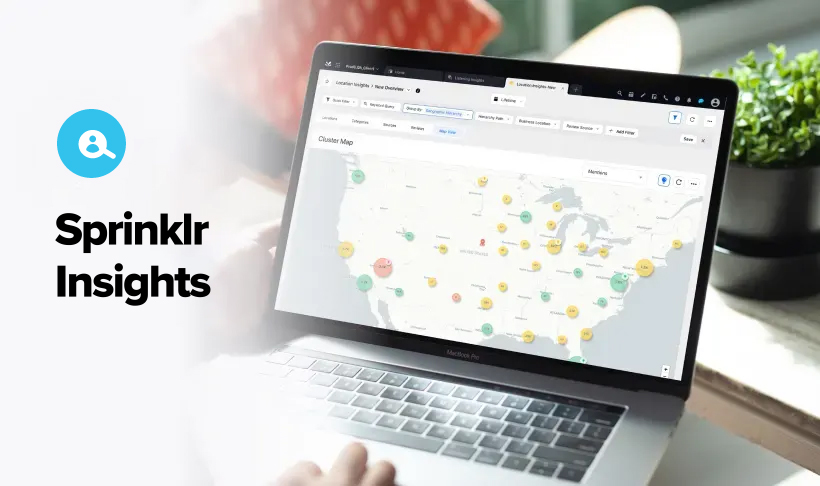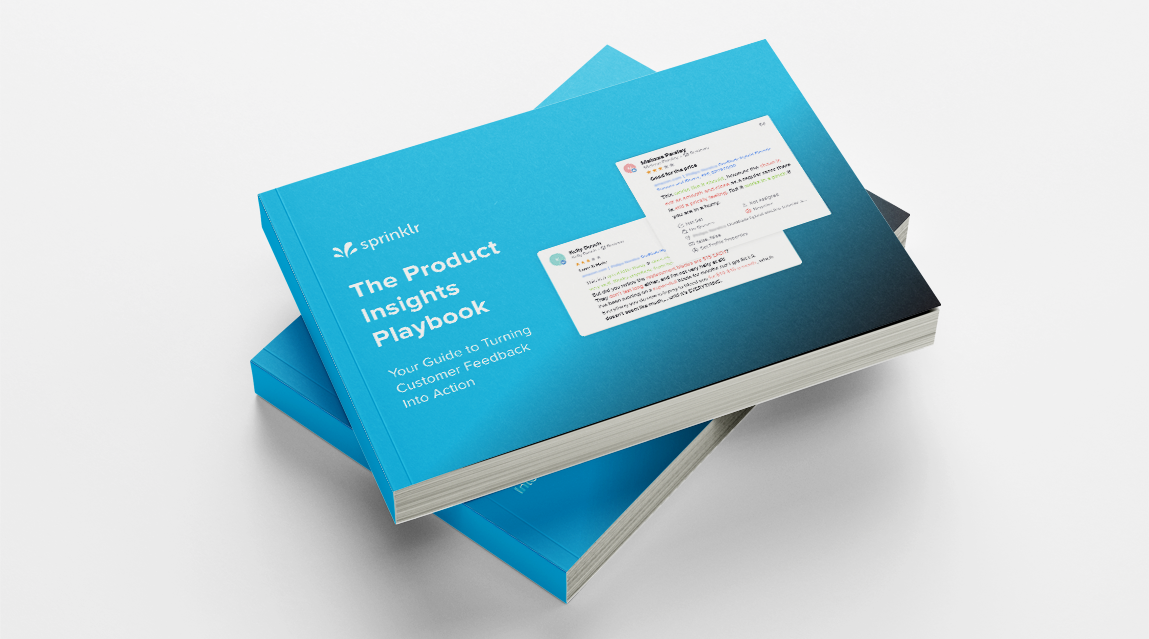- What is a competitive analysis?
- What are the benefits of performing a competitive analysis?
- Why should you do a competitive analysis?
- When should you conduct a competitive analysis?
- How to conduct a competitive analysis
- Competitive product analysis
- Accelerate the competitive analysis process by transforming real-time customer data into insights – and insights into action
What is a competitive analysis?
Competitive analysis, also known as competitor analysis, is the process of searching for and researching competitors in your industry to better understand their business strategies. This information can be used to compare your company’s strengths and weaknesses to those of your competitors.
What are the benefits of performing a competitive analysis?
Comparing your business to your competitors can help you in many ways. It shows you areas where your business or products can improve, helping you adjust your strategies to better fulfill customer needs. After conducting your analysis, you can use this new information for competitive benchmarking and tracking your company’s growth. Regular and thorough analyses also reveal emerging industry trends you can adjust to and new brands to be aware of.
Why should you do a competitive analysis?
Competitive analyses show you how your customers view your company compared to your competitors. Other reasons for conducting a competitive analysis include:
Identifying your business’ strengths and weaknesses
You can determine your company’s strengths and weaknesses by seeing how other companies are performing. When you know your brand’s strengths, you get a better feel about your position in the market and how you want members of your target market to view your company. It’s essential to communicate to potential customers why your product lines or services are the best choices on the market.
Understanding your company’s weaknesses is just as important as identifying its strengths. Knowing where you can improve can help you determine areas that need extra investments of time or resources. For example, if you learn that customers prefer a competitor’s customer service, learning more about their customer service processes can help you understand what improvements can be applied to your company.
Understanding your market
Market research can help you find potential gaps in the market where customer needs are not met. This information lets you know how you can enhance your products or services to meet these needs, or what new services or product offerings would be beneficial. You may also discover brands you’ve never heard of or never considered competition. You may not even be aware that they provide products or services that affect your role in the market.
Understanding your industry and knowing the trends
By analyzing your competition, you can learn how your industry is evolving. This gives you an idea of how you should adjust to stay up to date with new trends. Keep in mind, though, that just because your competitors are doing something, you shouldn’t always follow suit. Copying your competitors without establishing your own spot in the market is rarely a good idea.
If your competitors are doing something you’re not, don’t just copy their work. Take time to evaluate what new customers need and the value you can offer them. Establish your place in the market before making drastic adjustments.
Setting goals for growth
Analyzing established companies in your market shows you what it takes to be successful. You can use this information to set goals for growing your company. You can also consider new entrants to the market, as you’ll know potential future challengers and can set goals accordingly.
When should you conduct a competitive analysis?
It’s always a good idea to conduct a competitive analysis when starting a business. However, this isn’t the only time one should be conducted, as it’s a helpful tool for every stage of your business lifecycle. Routinely examining your competition helps you stay updated with new market trends and gives you a competitive advantage. For example, you might learn from your analysis that your product or service is lacking in a specific category in comparison to competitors. This information can help fuel strategic discussions around new product or feature development. It can also open up new opportunities for strategic partnerships to help develop new products or services and expand your brand’s offering or category.
How to conduct a competitive analysis
It can be tricky to figure out where to start and what to focus on when conducting competitive research. Ultimately, what you focus on depends on your company goals and where you currently sit in the market. We’ve included steps to consider in your analysis to get you started. Before you begin, consider what you hope to get out of your analysis and add any additional research as needed.
Determine competitors and their offerings
The first step of a competitive analysis is to create a list of competitors. To make this list, consider what companies your customer base would turn to if they couldn’t buy from you. The best way to do this is to search for your category or type of product or service on a search engine and examine the results. Any company that provides a similar product or service is your competitor. Consider what companies show up in the organic results, and the companies that are advertising on that search engine.
Keep your list short so you have time to research all of them properly. The more diversity you can include, the better. Having a diverse set of companies helps you accurately assess the market.
There are three types of competition to consider:
Direct competition
Direct competitors are those who sell a similar product or service as you to the same target audience. These companies often first come to mind when you think about competitors. For example, Pizza Hut would consider other pizza restaurants like Domino’s direct competition.
Indirect competition
Indirect competitors sell a different product or service to the same market that would fulfill the same customer needs. Using the same example from above, a burger chain like McDonald’s would be Pizza Hut’s indirect competition.
Replacement competition
Replacement competition includes businesses that sell different products or services in different categories but still satisfy similar customer needs. For Pizza Hut, replacement competition could include meal kits sold at grocery stores. Replacement competition is the most difficult to recognize.
When doing a competitive analysis, it’s important to focus primarily on direct and indirect competition. However, it’s worth taking a brief look at replacement competition that could threaten your company’s success.
Research competitor sales strategies
When looking into your competitors’ sales strategies, consider factors such as:
What their sales process looks like
The channels they use to engage with customers to sell products
The channels they advertise on
How many locations they have
Their annual revenue and sales volume
Whether they’re expanding or scaling down
What their customer relationships look like
What their pricing strategy is
This information gives you a look into a competitor’s sales process and how aggressive it is. It also gives you an idea of how to prepare your sales team to compete during the final buying stage.
Publicly held companies provide annual reports that you can find online, but finding this information from a privately-owned or small business is a little more complicated. If you have a CRM, search to find customers who have mentioned considering your competitor. Message them to gain further insight into why they chose your product over theirs and if any of those reasons involve sales strategies.
Compare your own pricing to how much competitors charge for products or services. If your products offer better features than theirs, consider raising prices. On the other hand, if you feel there’s a lack of affordable products in your industry, consider lowering prices to appeal to consumers who aren’t looking to spend more for high-quality products.
Examine competitors’ marketing tactics
Examining your competitors’ websites is the easiest way to measure their marketing tactics. Look at the content they’re using, such as:
Blogs
eBooks
Whitepapers
Podcasts
Videos
Infographics
Press releases
Slide decks
Case studies
Webinars
Digital events
In-person events
Free trials
Social content
Paid media
Make a note of any of these items your competitors use to help you determine what you might consider adding to your own website.
Analyze competitors’ content marketing strategies and engagement levels
Once you have a list of the content they use for their content marketing strategies, pay attention to the quantity of each item. Do they have 100 blogs or 10? Are there multiple whitepapers or a single eBook? If they have an extensive content archive, they likely post regularly. How often they post and how relevant their content is may increase their leads.
If they have a large amount of content, pay attention to the quality. How much they post won’t matter if their content is low quality, as consumers won’t gain any value from it. How does the quality of their content compare to yours?
Pick a few content samples to review and include a variety of topics. When examining your competitor’s content, consider how accurate it is, if there are any spelling or grammar mistakes, and the tone they’re using. Pay attention to the images they use and how compelling they are.
Look through comment sections to see the engagement your competitor’s content has. The number of comments, shares, and likes help you learn which topics resonate best with customers and what type of content gets the most positive and negative engagement.
Observe how competitors promote content
By analyzing your competitors’ content engagement, you can determine their content promotion strategy. How often are keywords used, and which keywords do they focus on? Are internal links used? Do other sites link to your competitor’s site but not yours? Who shares your competitor’s content? You can use these questions to determine where your content strategy is lacking.
Look at competitors’ social media platforms
Find out which social media platforms your competitors use and the amount of engagement they get. How do they drive sales or post engagement? Do they have links to social media channels on their website? Do they include social media links in all articles?
If your competitors use social media platforms that you don’t, learn more about these platforms and how they can help your brand. Look at your competitors’ engagement to determine if signing up is worth your time. Top social media platforms to pay attention to include:
Facebook
Instagram
X, formerly Twitter
LinkedIn
Snapchat
TikTok
Reddit
Discord
Additionally, note how many followers your competitors have, the type of content they post, how often they post, and the type of engagement they receive. Is their content geared toward driving sales or building brand awareness? How often do they interact with followers? What is their overall tone?
Analyze SEO
If your competitors post similar content but receive more traffic than you, it might be their SEO strategy. Search engines are getting better at understanding search intent. Stuffing keywords into your content no longer guarantees higher search ranks — that’s why you need high-quality content. If your competitor’s webpage outranks yours, find out why. Maybe you need to add more words or more in-depth content to your page. A top-ranking website may be outdated, so providing an updated version could get you higher rankings. Proper links and featured snippets can also rank you higher. Looking closely at competitors’ work helps you determine how to improve your content.
Perform a SWOT analysis
A significant part of a competitive analysis includes a SWOT analysis, which means noting your competitor’s strengths, weaknesses, opportunities, and threats. What do they do well? What could they do better? In which areas do they have an advantage over you? In which areas do you have an advantage over them? Has your competitor identified any opportunities in the market?
SWOT analysis compares your strengths against their weaknesses and vice versa. You can also identify new opportunities and threats from other competitors.
Determine areas for improvement
The last and most crucial step of a competitive analysis is to use your new information to improve your own business. Now that you know what your competitors are doing and how they are successful in the market, decide which areas in your company need the most attention. Maybe it’s time to hire more content creators or implement new selling strategies. Reevaluate your business strategy, create improvement goals, and continue to benchmark your growth.
Competitive product analysis
A competitive product analysis gives you an understanding of the key similarities and differences between your products and those of your competitors. Ensure that these similarities and differences don’t hurt your market position. Use the following four steps to conduct a competitive product analysis:
Assess pricing. The first step of product analysis is to assess pricing. Are your competitors’ products priced higher or lower than yours or using a different pricing metric altogether, and why? How big of a gap is there between your prices and the prices of your competitors?
Compare product features. The second step is to compare product features. Compare your product features to your competitors’ product features. How differentiated are they compared to yours?
Identify critical differences. Once you’ve compared the basic features, it’s time to take a closer look at more detailed differences. What makes your product better than the competition?
Find gaps in the market. The final step is to find gaps in the market that your company can use to get ahead. What customer needs are unfulfilled in the market? How can you improve the customer experience?
Accelerate the competitive analysis process by transforming real-time customer data into insights – and insights into action
Competitive analysis is one of the most time-consuming activities for brands. Sprinklr’s Competitive Insights & Benchmarking, part of Sprinklr Insights, automates competitive intelligence with AI to instantly reveal what the world’s biggest brands are doing across the eight most critical social channels — and which best-in-class experiences offer insights that your own organization can leverage to differentiate sooner.
Sprinklr Insights enables you to leverage real-time, data-driven insights to inform your business strategy by:
Automating the competitive analysis process with Sprinklr Social Listening to manage data and insights from the most popular modern digital and social channels
Pivoting your product strategy by understanding how your products, features, and services stack up against your competition when it comes to customer experience and sentiment
Enhancing your social presence with real-time performance metrics from competitors or industry-leading brands
Differentiating your brand in your market by enhancing brand performance, optimizing your content strategy, and estimating paid initiatives and customer support response times
Proactively pivoting your business strategy using AI Smart Alerts to detect when the market or competitors shift
Understanding where you may have resource gaps in comparison to your competition — whether that be in content marketing, customer service, product, or sales
Analyzing top-performing content of a competitor to enhance your existing content strategy and bolster SEO performance
Thank you for contacting us.
A Sprinklr representative will be in touch with you shortly.
Contact us today, and we'll create a customized proposal that addresses your unique business needs.
Request a Demo
Welcome Back,
No need to fill out any forms — you're all set.





